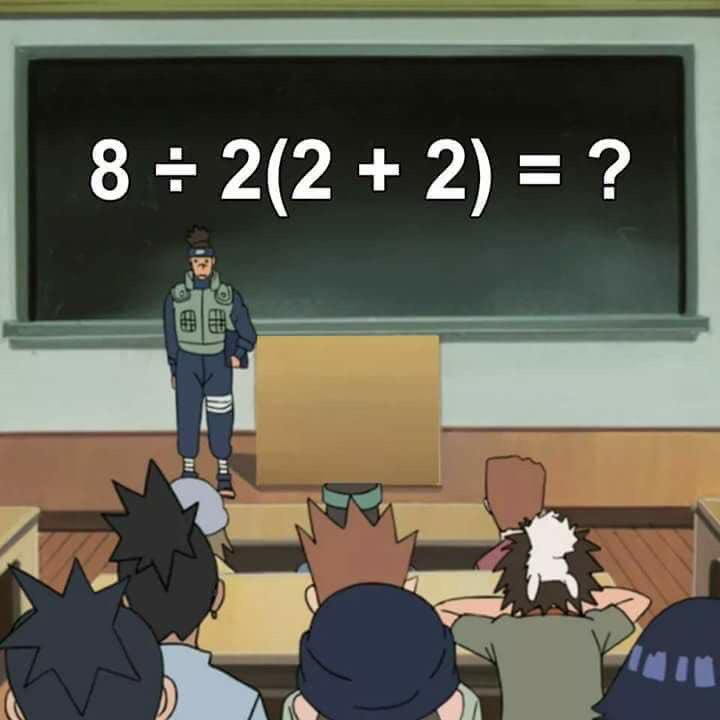The Internet used to be the place people reached for whenever they needed instructions or information, but nowadays it seems it’s a place they use to vent their frustrations and many times get into arguments with people they’ve never met. And sometimes, a “simple” math equation can be enough reason for a “war” to start between social media users. If you wonder what we are speaking about hear this.
Just recently, someone posted this on Facebook, 8 ÷ 2(2+2) = ?, and wrote, “only 1 in 1,000,000 can solve this simple equation.” Well, based on the stir it caused, it’s not that simple after all.

Based on what thousands of people commented, the opinions are divided between the following answers, 1 and 16.
Even different calculators give different results.

Of course, not everyone is trying to find the answer to this mysterious math problem. Believe me, many are here because of the comments and people’s arguments.
It turns out that politics isn’t the only topic that makes people feel like they have to share their opinions about. Psychologists say that the huge number of people “fighting” about things like this equation is that they have to show the rest of the online world how smart they are.


Academic Sian Beilock of the University of Chicago says that when these debates of who’s right and who’s wrong make people feel like jerks at the end once they realize they are investing too much time and energy convincing others why their answer is the best one. “Often people feel the most stressed when the audience is made up of people they know. It’s very painful to fall on your face in front of your friends and family,” Beilock explained.
When we were at school, teachers taught us that mathematics is a subject without ambiguity, so how is it possible for a math task to have two different answers? Mathematicians explain that same as the syntax of a language, equations are solved by “reading” them the proper way, or ordering the operations the right way. PEMDAS, which stands for Parentheses Exponents Multiplication Division Addition Subtraction is how we were told operations are ordered. Based on this common knowledge, the answer to this popular equation is 1. But is it really like that?


This simple task really shows the lack of our educational system to teach students the ambiguity and the beauty of the subject of mathematics.
Most of the social media users who provided an answer agree that what is in parenthesis should be calculated first, the problem arouses when they have to decided whether division or multiplication comes next. Based on what you choose to do first, the answer is different, of course.
In such cases, we use the most common standard convention, which says operations are done from from left to right. What it means in this case is that division comes first and the correct answer is 16.

Steven Strogatz, a professor of mathematics at Cornell, said, “No professional mathematician would ever write something so obviously ambiguous. We would insert parentheses to indicate our meaning and to signal whether the division should be carried out first, or the multiplication.”
At the end, we have to agree that our education system many times fails to teach us how to think outside the box, a so-much needed trait for solving many everyday problems.
